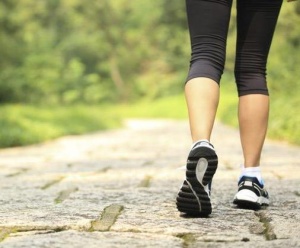The news media is bursting at the seams with stories of the incidence of people addicted to pain medications. Every year prescription painkillers cause more than 16,000 deaths and 475,000 emergency room visits. Now admittedly, some of those people just take the meds for the “high”, but, the majority of folks began taking prescription painkillers to help alleviate chronic pain, and now cannot live without that medication. While Grandpa might have rubbed liniment on his joints to help the pain subside a little, people today feel the need to be as pain-free as possible, even if it means popping pills on a regular basis.
Facts about pain meds
In 2015, the Centers for Disease Control and Prevention (CDC) classified prescription drug use as an epidemic and the World Health Organization (WHO) concurred, saying that prescription drug use threatened the achievements of modern medicine. They went on to say that prescription drug abuse is indeed a global problem, and, that the United States has become the world’s biggest addict. Unbelievably, Americans account for 99 percent of the world’s hydrocodone (Vicodin) consumption, 80 percent of the world’s oxycodone (Percocet and OxyContin) consumption and 65 percent of the world’s hydromorphone (Dilaudid) consumption, according to the New York Times.
Now, all those facts are scary, aren’t they? But, the sad truth is, that if you have never been in pain as a result of an accident, post-surgical procedure, or even age-related arthritis, it may be hard for you to fathom just how quickly one can become dependent upon prescription medications to give them a better quality of life.
As to back pain, if there was a means to relieve chronic back pain, without undergoing surgery, wearing a cumbersome back brace, or using prescription meds, wouldn’t you be interested to know your options? So, let’s focus on some exercises geared to relieving chronic back pain, which affects a whopping 80 percent of all Americans.
Exercises for reducing back pain
The best help you can offer a person that endures chronic back pain is sharing these exercise tips, but, just like any exercise regimen, a visit to a top New Jersey spine doctor is in order first. A NJ spine specialist will be able to tailor exercises geared to YOUR chronic back pain.
Whether that back pain is a result of a twinge from overzealous snow shoveling, overdoing your workout at the gym, or the after-effects of a previous back injury, spine specialists suggest that you don’t “baby” yourself – no more than three days’ bed rest should be taken, then moderate activity should begin again. Remember to move in moderation, so as to not strain yourself further. Low-impact exercises are best to get you on the road to recovery if it is sudden back pain, and, if the back pain has been of long duration, these exercises may ease your pain level somewhat.

Walking is the perfect exercise
The first recommendation might be to begin a walking regimen, since it is a low-impact exercise, and, it will be easy to try, without investing a lot of money on special equipment. All you need are a well-constructed pair of walking shoes and comfy padded socks then you’re good to go.
A low-impact exercise regimen like walking has the ability to lessen pain, boost strength, increase flexibility and prevent the reoccurrence of chronic back pain. This is because walking stimulates the brain to release neurotransmitter chemicals such as serotonin and endorphins that make you feel better physically and mentally. Just one outdoor walking session may reduce lower back pain as much as 10 to 50 percent! Using a treadmill counts too – in fact, ten minutes of treadmill walking has been known to significantly reduce back pain. But, don’t be too overly exuberant when beginning a walking regimen. Start out slow, build up the length of your walk gradually. Also, it is best to find a walking path that is flat, not hilly, since walking on hills forces your body to lean forward causing lower back strain.
Other exercises
If walking is not for you, or, you simply want to supplement the walking regimen with additional exercises, here are a few more.
Gain flexibility. Sometimes, our tension and tightness cause back pain, and, if you have the ability to increase the flexibility in your back from the top of your head to your feet, it will help to alleviate the pain. Try sitting on the edge of the bed with one leg extended and the other one on the floor. Give your hamstrings a stretch by leaning forward while keeping your back in a neutral position.
Strengthen your core muscles. Spine specialists recommend chronic back sufferers could benefit from stronger abdominal muscles, because if your “abs” are weak, other areas must “pick up the slack”, so, by strengthening your core muscles, it helps to reduce the strain on the lower back. Yoga-style “planks”, weighted sit-ups and “trunk twists” are helpful for strengthening core muscles, but easy does it!
Keeping your body limber and flexible makes all the difference in good back health and hopefully these tips have helped your back pain decrease.

